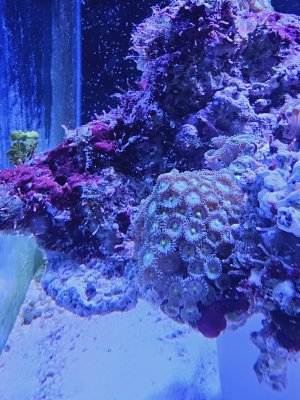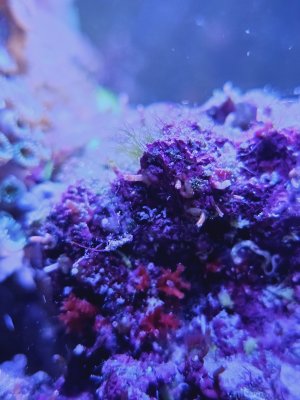Max_in_Tax
Member
Hello,
I used to be very active on this forum back in high school (15 years ago), but I just made a new account.
I'm hoping someone can help identify this macro algae. I can usually research and figure it out on my own, but I'm stuck on this one... I'm 95% sure it's caulerpa, but I'm struggling to find the exact species.
It is similar to Racemosa, but it's not quite the same. Racemosa stacks it's leafs whereas this is singular. It's also similar to Branchypus, but again not quite. Perhaps it is one of those, but my LED lights are causing atypical growth patterns?
It grew out of some Australian live rock that I got last year, but really established itself well on this ancient tonga branch pictured below.
It's quite nice and easier to control than other caulerpas I've grown. it doesn't seem to send runners into sand (unlike C. Branchypus).
Thanks in advance.

Any ideas?


I used to be very active on this forum back in high school (15 years ago), but I just made a new account.
I'm hoping someone can help identify this macro algae. I can usually research and figure it out on my own, but I'm stuck on this one... I'm 95% sure it's caulerpa, but I'm struggling to find the exact species.
It is similar to Racemosa, but it's not quite the same. Racemosa stacks it's leafs whereas this is singular. It's also similar to Branchypus, but again not quite. Perhaps it is one of those, but my LED lights are causing atypical growth patterns?
It grew out of some Australian live rock that I got last year, but really established itself well on this ancient tonga branch pictured below.
It's quite nice and easier to control than other caulerpas I've grown. it doesn't seem to send runners into sand (unlike C. Branchypus).
Thanks in advance.
Any ideas?




